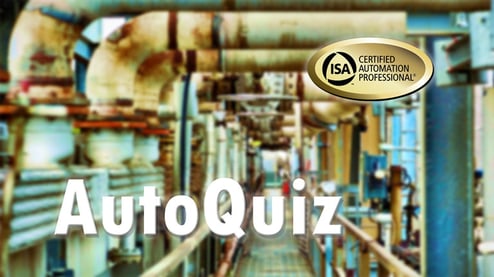AutoQuiz is edited by Joel Don, ISA's social media community manager.
Today's automation industry quiz question comes from the ISA Certified Automation Professional certification program. ISA CAP certification provides a non-biased, third-party, objective assessment and confirmation of an automation professional's skills. The CAP exam is focused on direction, definition, design,  development/application, deployment, documentation, and support of systems, software, and equipment used in control systems, manufacturing information systems, systems integration, and operational consulting. Click this link for information about the CAP program. This question is from the CAP study guide, Performance Domain III, System Design. Definition: Design, specify, and procure the hardware/software used in the system.
development/application, deployment, documentation, and support of systems, software, and equipment used in control systems, manufacturing information systems, systems integration, and operational consulting. Click this link for information about the CAP program. This question is from the CAP study guide, Performance Domain III, System Design. Definition: Design, specify, and procure the hardware/software used in the system.
Which of the following protection techniques is acceptable for equipment located in a Class I, Division 1 area?
a) explosion-proof apparatus and nonincendive equipment
b) explosion-proof apparatus and intrinsic safety
c) dust ignition-proof and nonincendive equipment
d) hermetically sealed and intrinsic safety
e) none of the above
Hazardous location protection techniques are defined by NEC 500.7 (NEC 2002 Code). The protection techniques are permitted as follows:
- Explosion proof apparatus-Class I, Division 1 or 2
- Intrinsic safety-Class I, Division 1 or 2; Class II, Division 1 or 2; or Class III, Division 1 or 2
- Nonincendive equipment-Class I, Division 2; Class II, Division 2; or Class III, Division 1 or 2 (does not include Class 1, Division 1)
- Dust ignition proof-Class II, Division 1 or 2 (does not include Class I, Division 1)
- Hermetically sealed-Class I, Division 2; Class II, Division 2; Class III, Division 1 or 2 (does not include Class I, Division 1)
The best answer is B, explosion-proof apparatus and intrinsic safety.




